-
×
 wydot call order 2
wydot call order 2
- user:
1 × $0
Subtotal: $0
Spring is here and we can see the demand is rising for tree trimming or shrubs removal. But how much does it cost to trim the trees in your yard or remove them completely?
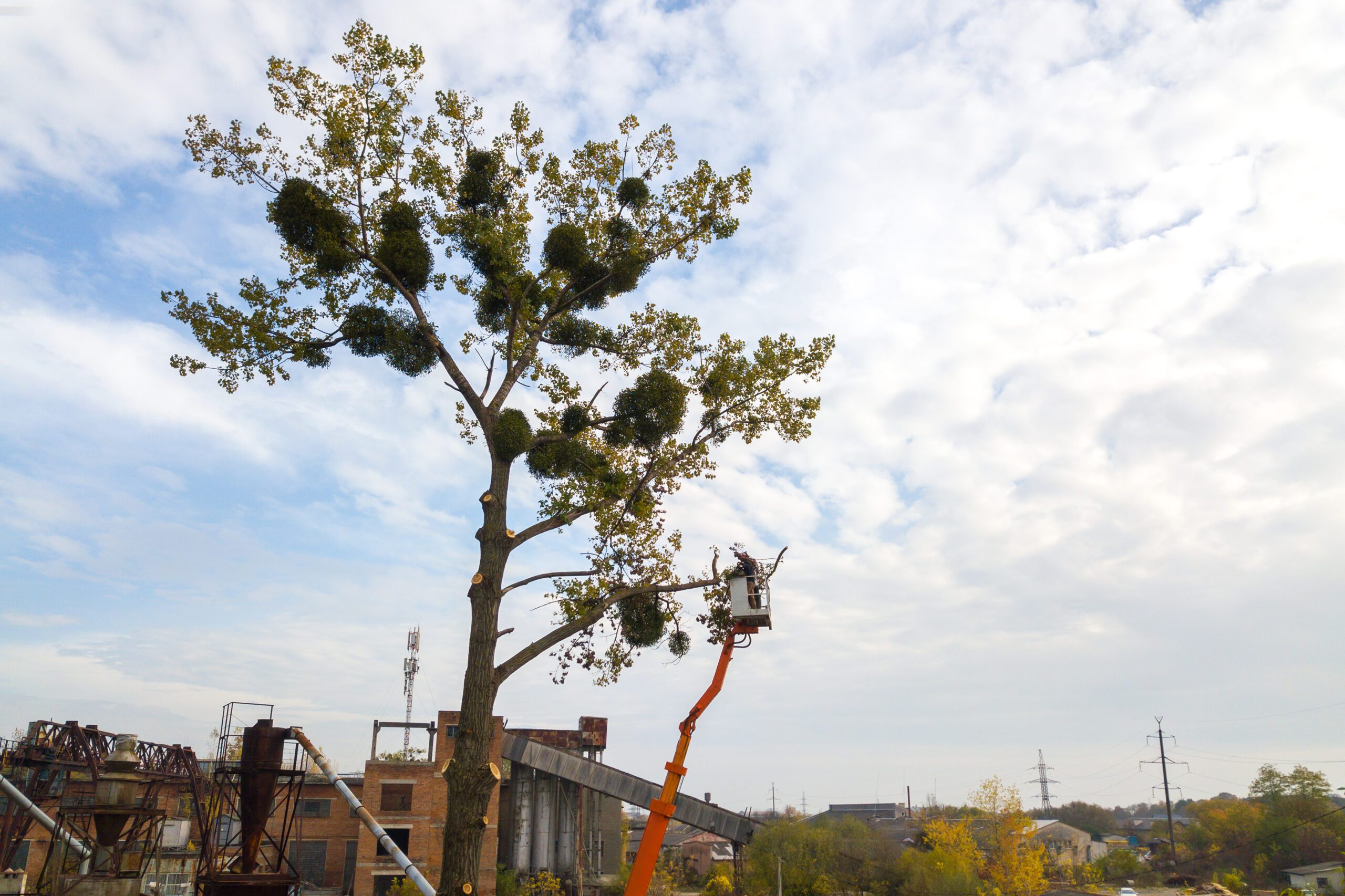
A cost statistic from May 2021* indicates that on average, removing bushes and trees costs $876 with most homeowners paying between $432 and $1.326. These prices reflect total project costs.
National Average $876
Typical Range $432 – $1,326
Low End – High End $175 – $2,500
For any tree, bush or shrub between about 15 to 30 feet tall, you’ll pay $100 to $200 each. For shorter bushes or shrubs, you might only pay $50 to $60 an hour plus any dumping fees.
Most forest applications use one of two types of tree height measurements:
1. Total height. Is the height of a tree from its stump to its tiptop (Figure 2.1). A one-foot stump is standard, although there are times when another base is used.
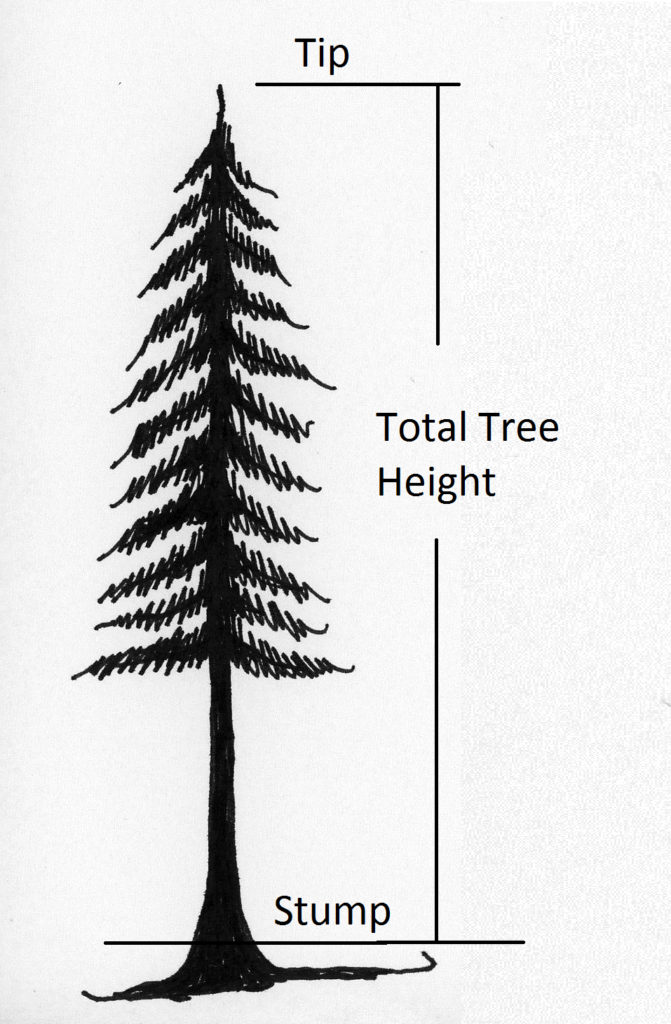
2. Merchantable height. Is the height of a tree from its stump to a diameter at which the trunk is too small to be marketable (Figure 2.2). This “merchantable top” diameter is commonly six inches or some percentage of a diameter low in the tree, such as diameter at breast height (DBH; see Chapter 3). “Taper height” is very similar, without the emphasis on the top diameter being the end of merchantability.
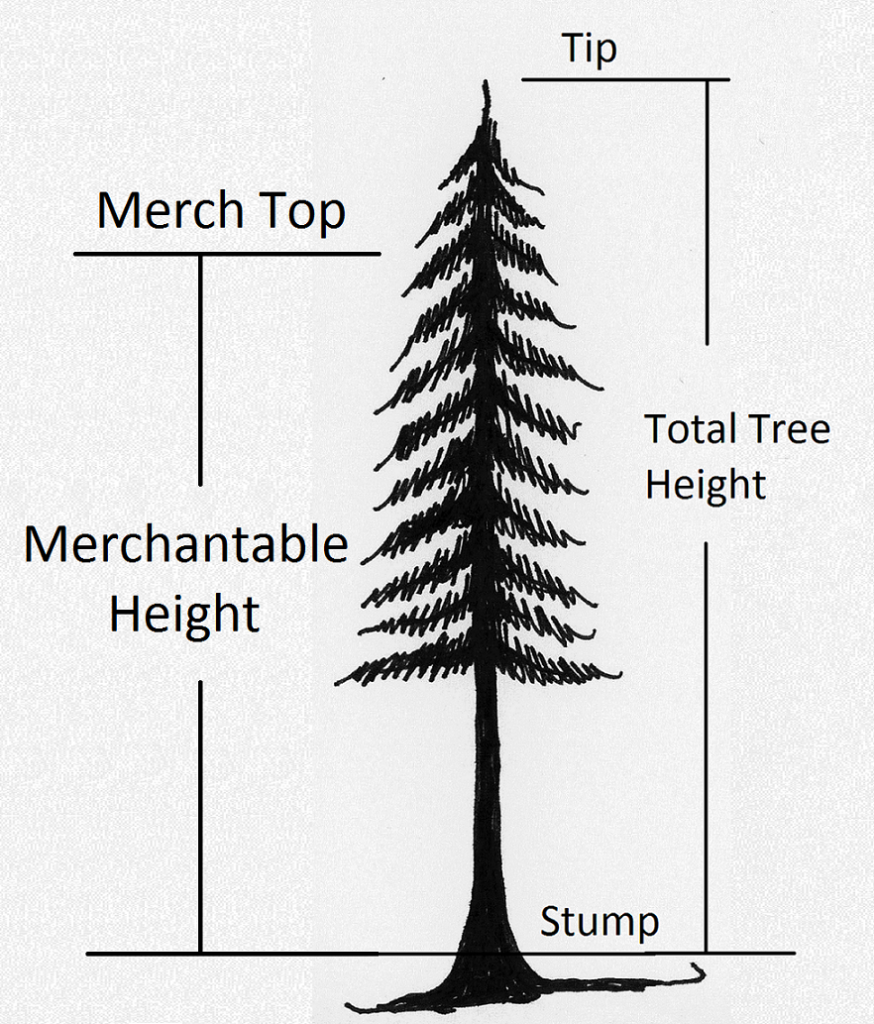
The principles and techniques for measuring any of these heights are essentially the same. This text will focus on total height.
So, how does one figure out how tall a tree is? Surely not by climbing each tree with a tape or measuring its shadow. A simple, accurate, and rapid measuring method is needed to make tree height a feasible part of our inventory data. Here is the easiest way for good precision:
In determining tree height, a tree is presumed perpendicular to the ground (Figure 2.3). Therefore, the tree makes a right angle with the ground, and a right triangle can be drawn from it. The triangle’s three sides are: 1) the tree, 2) a horizontal distance along the ground, and 3) an imaginary diagonal line running from the top of the tree to the ground. Likewise, the tree’s height can be considered the rise and the horizontal ground distance the run. (Sound familiar?) If a horizontal distance from the tree to a place where we can see the tree’s top can be measured, the tree’s height can be determined using %slope.
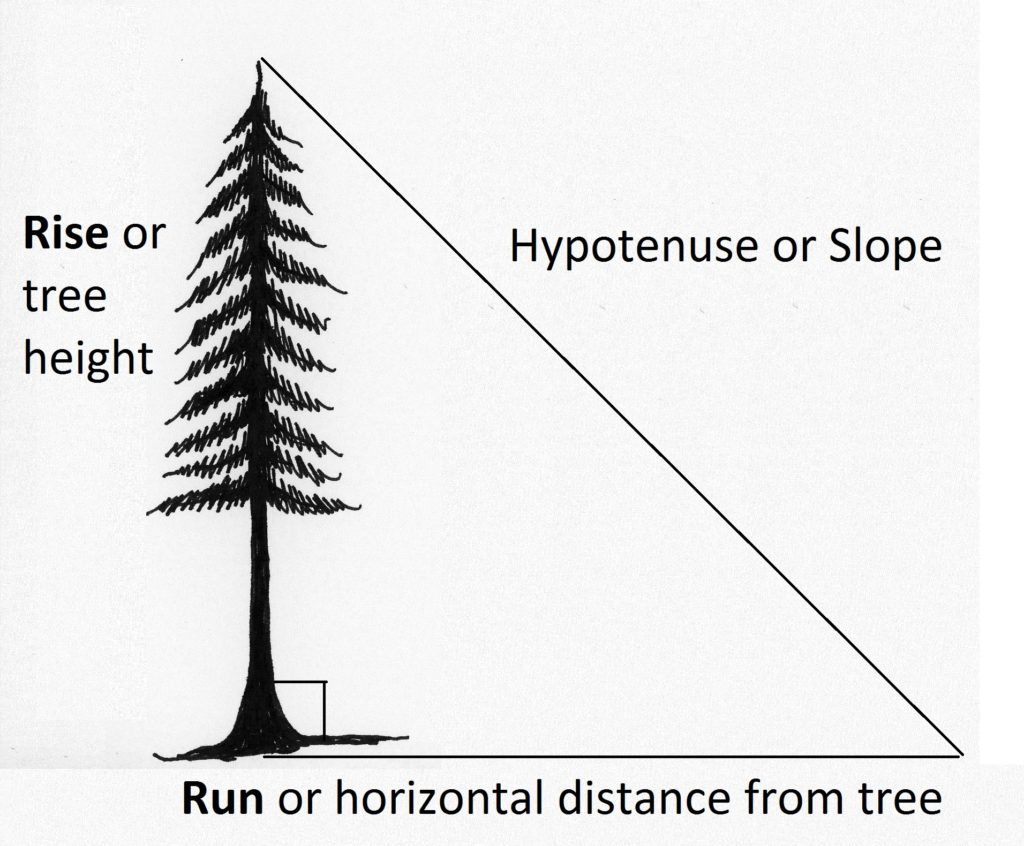
Trees do not grow like cylinders, but rather taper upward; a tree’s diameter gets smaller as one gets closer to the top of the tree. Trees also have butt swell, a thickening of the wood and bark at the base of the tree to support the tree’s mass (Figure 3.2). Butt swell can create a very large diameter on trees exposed to heavy wind, on steep slopes and in sparsely populated stands. Thus, to obtain truly useful diameter data, the question becomes, “Where on the tree should I measure?”
To make tree diameter measurements meaningful and easy to perform, a standard location and protocol have been developed. Diameters are measured outside the bark at 4.5 feet above the ground on the uphill side of the tree (Figure 3.3). This location, called diameter at breast height or DBH, is above most butt swell and brush. It is also at a comfortable arm position for most people.
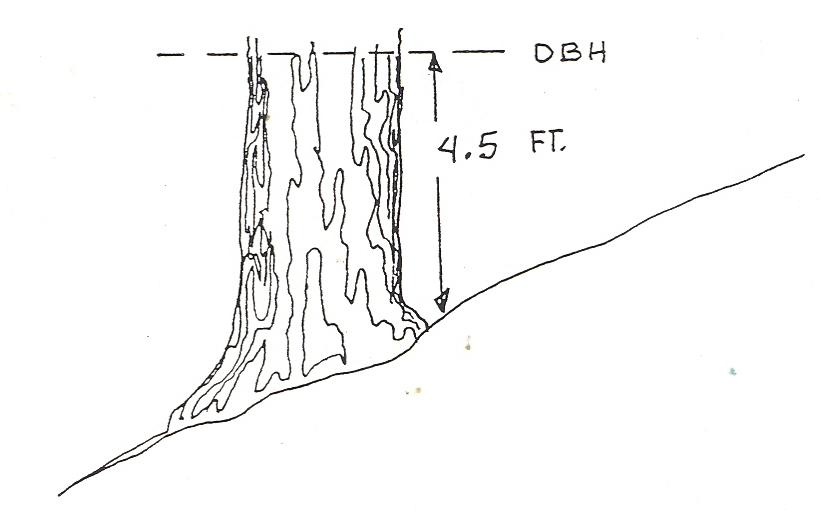
For most trees in the forest, measuring DBH is quite straightforward. However, there are plenty of irregular trees that require adaptations, as described in Figures 3.4 – 3.10. (All illustrations from or adapted from [FS] 1990.)
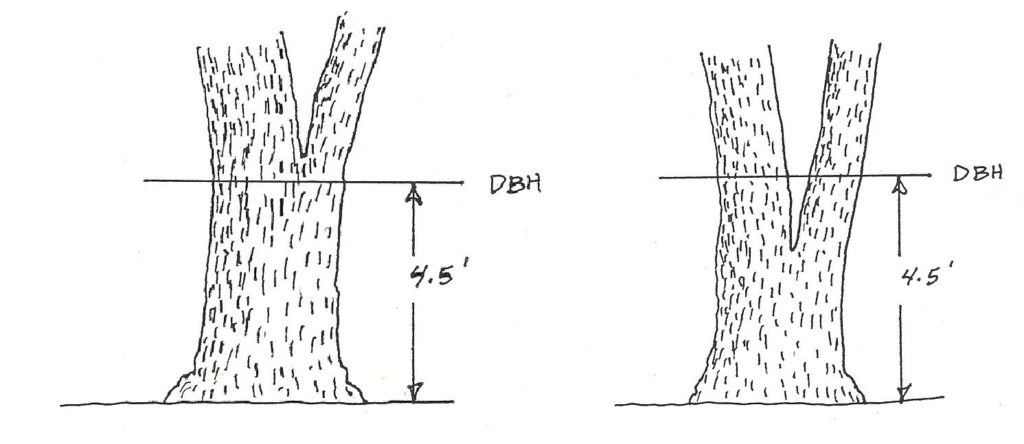


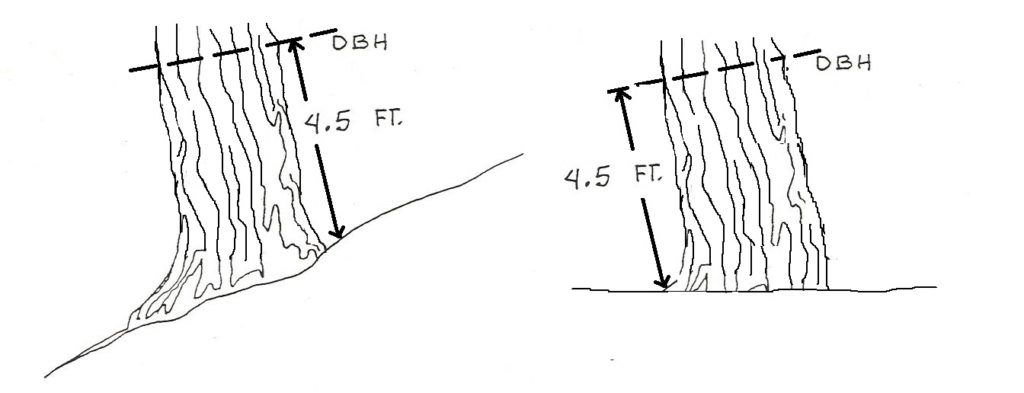
A shrub is generally a little taller than a bush without any foliage touching the ground. A hedge represents a line of bushes, shrubs and even trees pruned and shaped to form one continuous line of foliage.
Did you know the GIS created a vegetation map of Texas to provide an overview on the Texan ecosystem?
Most requests towards tree & shrubs removal in Texas are mainly from:
Dallas, Texas | Mansfield, Texas | Grand Prairie, Texas and Arlington, Texas